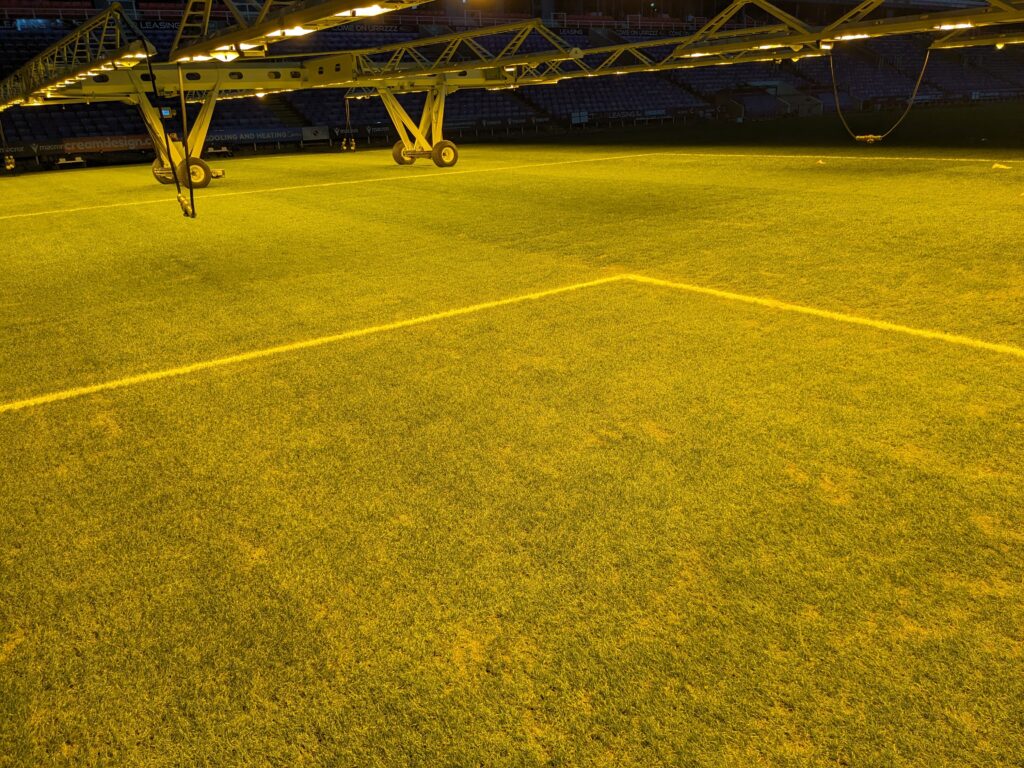The soil temperature required for growth and to keep C3 and C4 grasses are different. A warmer soil contains more energy. More energy available enables chemical processes driving plant growth to work faster and more efficiently. This means grass can make food quicker (through photosynthesis) and therefore grow faster.

There is a direct correlation between the temperature of the soil and the speed in which grass grows. However when the plant becomes too warm (heat stress) some of the chemical reactions for photosynthesis begin to slow and focus is put on retaining moisture. Similar to when the plant becomes too cold (cold stress) when the plant becomes dormant.
It’s clear that warm-season grasses are more heat tolerant than cool-season grasses, and that cool-season grasses are much more tolerant to cold temperatures than warm-season grasse. The area’s near the equator are the most difficult areas to grow grass, in the USA this area is called the transition zone. Where summers are too warm for cool-season grasses and winters are too cold for warm-season grasses. In these cases a mixture of C4 and C3 grasses must be used, sometimes together, sometimes depending on the season.

Soil temperature is not the same as air temperature. The earth acts like a giant radiator. It gradually absorbs the sun’s energy over time, and then releases it slowly. Air temperature can fluctuate dramatically as day turns to night and as the seasons progress. Soil takes a long time to change temperature. In the spring, the soil is cold from the winter and can take a long time to heat up. This is why spring scarification and lawn repairing can pose problems due to the soil not having warmed sufficiently. Seed may not germinate quickly and grass growth can be sluggish. In the autumn, the opposite is true. The air temperature may be falling, but the soil retains a lot of heat. This helps seed germination and aids the grass in absorbing valuable nutrients from autumn fertilisation. Many lawns can continue to look green and lush well into autumn and early winter. Autumn is usually the best time for seeding and major lawn renovation work.
Adaptation to light. Generally speaking, cool-season grasses are better adapted to shade or cloudy conditions and tend to grow much better in those situations than warm-season grasses. Cool-season grasses also generally grow better in low light levels especially during shorter days than warm-season grasses. There is no such thing as a shade loving grass, all grasses require full sunlight for optimum growth it just happens that some cool-season grasses can continue the process with lower levels of lights. Photorespiration which takes place only in measurable amounts in cool-season grasses also favours cloudy conditions. Whereas warm-season grasses will start to decline during cloudy conditions due to the lack of photorespiration. Some warm-season grasses such as Zoysia are more shade tolerant than other warm-season grasses, however are not as shade tolerant as most cool-season grasses.
Plants in the field are commonly exposed to fluctuating light intensity, caused by variable cloud cover, self-shading of leaves in the canopy and/or leaf movement due to turbulence. In contrast to C3 plant species, only little is known about the effects of dynamic light (DL) on photosynthesis and growth in C4 plants.
